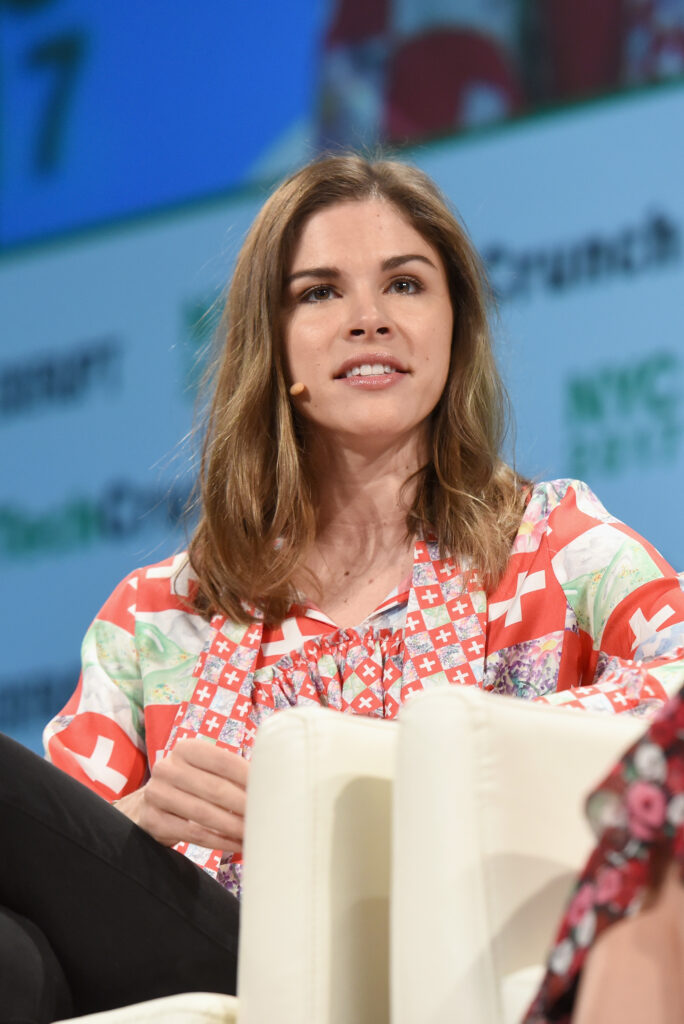From 4 products to around 40. From initial $2 million in seed funding to the value of more than $1 billion. From 15000 followers to more than 3 million customers. Everything in 5 years. We are talking about Glossier – an online beauty start-up with simplicity as a key part and Emily Weiss as a founder and CEO.
How did it start?
Emily Weiss got into the fashion and beauty industry since her teenage years when at the age of 15, she joined Ralph Lauren as an intern. Weiss also had a brief modelling carrier, an internship at Teen Vogue and a role on TV series The Hills.
After getting a degree in studio art, Emily Weiss has joined W Magazine as a fashion assistant and Vogue as an on-set styling assistant. While working at Vogue, in2010, Emily Weiss started the beauty blog Into the Gloss, which featured mainly interviews with famous women. The blog produced very personal content with conversations with magazine editors, street-style icons, entrepreneurs and models, some of whom shared the secrets of their beauty routines, images of their bathroom shelves and medicine cabinets.
In about two years the site had more than 200.000 unique visitors per month. After Into the Gloss reached 10 million views per month, Emily Weiss gained corporate partnerships, staff and left work at Vogue to fully concentrate on her business.
The beginning of Glossier
Running her blog, Emily Weiss realised that many beauty brands were not engaging enough with the new generation of millennial consumers. They were expensive, and they were promoting an idea of ideal and not of natural beauty. They were not on social media which was rapidly taking off either. So, instead of being an intermediary between beauty companies and consumers, Weiss decided to build a new makeup and skincare company which would be close to its customers – online.
Emily Weiss planned to start her business with only four products (a moisturiser, a face mist, a skin tint and a lip balm) and managed to get an initial $2 million in seed funding. She also planned to do things a little different and to concentrate on millennial-friendly marketing and social media. As E. Weiss told The Cut, “I wrote out, ‘Here are all the things we need to launch: Website. Chemist. Office space.’ And then I just checked them off, one by one. Put all the balls in the air. Got pregnant with Glossier. Incubated. Gave birth to four beautiful products.”
The founder of Glossier decided that the company would focus on communication with its customers, maybe even involve them in the creation process, be digital and operate direct-to-consumer (DTC) strategy.
What is the key element of success?
Direct-to-consumer model greatly influenced the impressive success of Glossier. The company does not have a presence in department stores or beauty retailers. Instead, online sales are managed through its own e-commerce site at Glossier.com. The company markets its makeup and skincare products on its very well maintained Instagram page, which is followed by almost 3 million people. As Weiss has said to the Wired, the decision to not distribute the products via other channels was taken in order for Glossier to be in complete control of its relationship with customers, with no third-party intermediaries. Also, to have the first-party customer data for marketing purposes.
The original beauty blog Into the Gloss also cannot be forgotten as it had an enormous impact on the success and in a way, was a springboard for Glossier. Thanks to the blog, Glossier had more than 15,000 followers on Instagram before it had launched a single product and most of the readers and followers of Into the Gloss became customers of Glossier. The company used social media and digital content creation very wisely to get cult-like status and create a global community.
Glossier was launched in the era of social media and influencers and company’s attitude towards it differentiate it from the rivals that usually focus on luxury and glamour, but hard to reach images. Glossier features regular people in its ads. It creates a more youthful, modern image to the company and feeling that it is much closer to its customers. People want to be unique, have their own style, not to cover their faces, but rather enhance the natural beauty, and Glossier suggests exactly that. Simplicity is the key element, and this is why started with 4 products, right now they provide about 40 different products across skincare, makeup and fragrance – a minimalist offering by beauty brand standards. This way Glossier tries to produce ‘’the best in kind’’ products, which would be simple and would become essentials.
Youtube bloggers, Instagram influencers, celebrities and simple women – they all love Glossier products. In 2018, the company claimed to have sold the equivalent of one eyebrow pomade every 32 seconds. Weiss and her company have helped millions of consumers to love themselves, while the beauty industry usually failed to do so. Glossier values its customers and includes them to the creating process. A few years ago Glossier started a Slack channel for around 1,000 of its most engaged community members to chat directly with each other and the team and this way the Glossier team gets the real opinion from actual customers.
Glossier achievements
According to CB Insights in April 2020, there are over 450 unicorn companies (companies with a valuation of over $1 billion) worldwide, and Glossier has been among them since the first half of 2019. That time Emily Weiss wrote on her Instagram post ‘’Baby me in 2014 wasn’t sure if we could afford the next hire, didn’t know if anyone would like her idea for a beauty company… Emily in 2019 has been through hell and high water to build an incredible company with incredible people… and been among a very small minority of women raising this kind of money at these kinds of prices, to build the things they believe in. Today Glossier was able to achieve something very special. And all it means, is that we get to keep building things that make people happy.’’.
The company and Emily Weiss as an entrepreneur are well-acknowledged; in 2019 Emily Weiss was included in ‘’Time’’ magazine’s ‘’Next 100’’list as one of the innovators. As it is said on Time, ‘’ Emily is proof that you don’t need to have gone to business school to understand the fundamentals of community. ‘’ The company now employs more than 200 people and has over 3 million customers.

